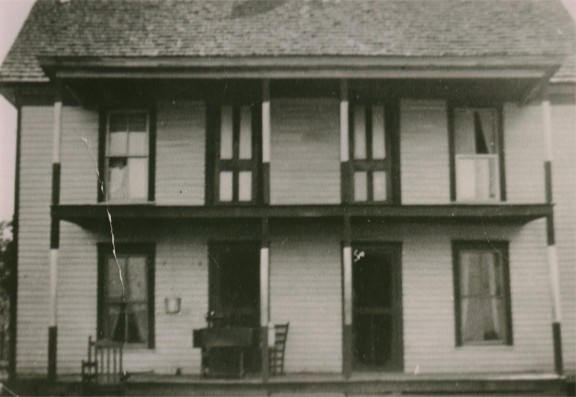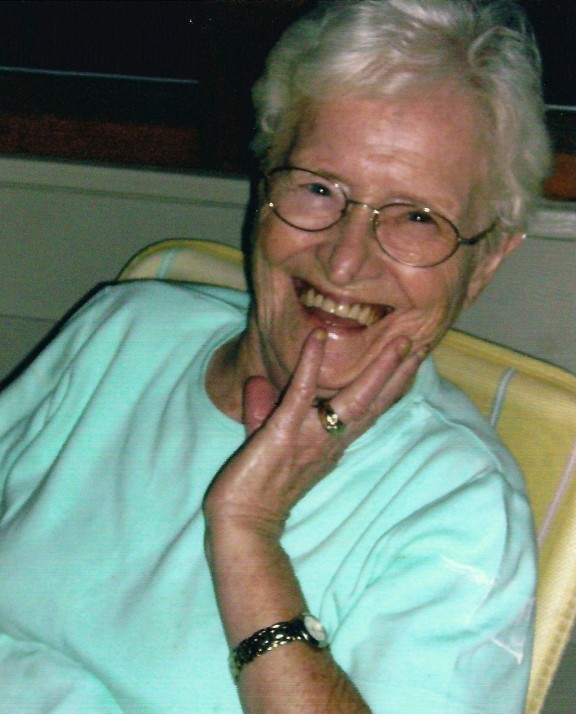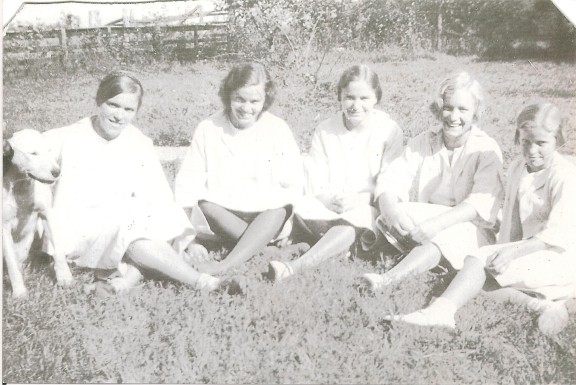

Meal time at the Garner house seldom included any kind of meat. Everyone in the family much preferred vegetables. Their method of preserving corn was something I had never heard of before. The outer most layers of the corn shuck were removed and the remaining layers were tied together at the top. The corn was then placed in a large wooden barrel and a pickling brine was poured over the corn. When the corn was removed from the barrel, it was cut off the cob and cooked in a skillet. Lura says there are times she can still smell those pickled ears of corn. The barrel of corn would last all winter long if they didn’t eat too much of it at one time. Sulphuring apples was another way used to preserve that fruit and they were also dried. The price folks paid the Garner family for dried apples then was seven cents a pound.
There were two churches in the neighborhood near the Garner home. One was called New Charity, and it was of the Baptist faith. Bethesda was a Methodist church and had Sunday School classes in the morning while New Charity had Sunday School in the afternoon. Both churches had the same song leader, and those people who taught Sunday School at the Baptist church in the mornings also taught the afternoon classes at the Methodist church. It was nothing unusual for most families in that area to attend services at both of these churches. The Garner children invited all their friends in the whole neighborhood to go home with them after church services, and not necessarily just to have friends to play with. The well near their home usually went dry every summer, and after having Sunday dinner, everybody took a bucket and walked about a mile to a spring to bring water back to the house. The more friends they could get to go home with them on Sunday meant one less trip to the spring for water.
Lura learned to sew when she was only 10 years old. That was when she made a dress for herself for the first time. It was made from navy blue denim material and had a white sailor collar with trim around the edges. Her mother would often hold the coal oil lamp so Lura could see how to sew after it got dark. The Garner home never had electricity while Lura was growing up.
The Garner children attended a one room school called Greenbrier that was just a short walk away from their home. They all went home each day at lunch time. Lura remembers how she hated to have to wear shoes to school when the fall season came around, and would often take them off once she got to school. But it didn’t take her mother long to catch on to what she was doing. One look at her dirty feet before bedtime told off on her, but it was only when the weather got really cold that she kept her shoes on at school.
The Garner farm had horses, cows, sheep, mules, and chickens. One of Lura’s jobs was taking care of the chickens. Every spring, she usually had over 100 baby chicks to care for. Eggs were sold at a nearby general store in the community known as Slat. The Garner family walked most everywhere they went, but at one time, their father owned a T-model Ford, but he didn’t keep it long because the roads in that area were in such bad condition. A horse and buggy was a better source for traveling, and most of the time, the parents rode in the buggy while the children walked along beside the buggy.

Lura’s brother, Roy, got the nickname "Pepper" from an uncle who came in the kitchen one day and found Roy crying. When he asked what was wrong, Roxie Garner explained she could not keep her young son out of the spice rack that day and he ended up getting pepper in his eyes. From that day on, he was known as Pepper, and even the mailman didn’t know him by any other name. In fact, after Roy went into service, the mailman asked why so many letters were written by family members to someone named Roy Garner and no one ever bothered to write to Pepper. Needless to say, he was surprised and probably embarrassed as well when he found out Pepper’s real name was Roy.
It was while Lura was working as a waitress in the Breeding Hotel in Monticello that she met E.G. Gray. His father had recently passed away, and he was coming to Monticello to work with the husband of a close friend of Lura’s. The husband, Bronnie Corder, was a jeweler and had a shop in Monticello. His wife, Lena Corder, was not only Lura’s close friend, but had been her seventh grade school teacher. E.B. had taken over his father’s business in Livingston, and needed someone to teach him how to repair watches and whatever else was involved in the running of a jewelry business. It was on a Saturday night when Lura’s friends brought E.B. to eat supper at the restaurant. She was their waitress that night. That began a courtship of some six months and on the 19th day of July, 1943, E.B. and Lura decided that was the day they would marry. It was an unforgettable day in more ways than one. The first thing Lura had to accomplish on their wedding day was to get her hair done. A new permanent she had gotten earlier had damaged her hair and she didn’t want to show up at her own wedding with burned and frizzy hair. After leaving Monticello in a borrowed car that had been sitting in an a barn since the beginning of World War II, E. B. and Lura started out to Jamestown, Kentucky with Bronnie and Lena Corder along. They planned to get the necessary blood test done there, but on the way, they had not one but two flat tires to deal with. After finally making it to Jamestown, the young couple had to wait a good bit of the day to see the doctor who did the blood test. By the time they got back to Monticello, it was late afternoon, and the bus they intended to take to Livingston had already left. Because Lura’s father was willing to give them a ration stamp to buy gas for the trip to Livingston, both couples started on to Tennessee in Bronnie and Lena Corder’s car. Just when it seemed like the wedding would finally take place once they got to Livingston, another obstacle appeared. The courthouse in Livingston was closed when they arrived. Knowing how her father would react if he knew his daughter would be spending the night in the home of her soon to be in-laws prior to getting married, Lura knew that would never work. With no other way to accomplish getting a marriage license, E.B. went through a window in the courthouse intending to open the locked door from inside the courthouse so that everyone could come in. But when he came out the door, it closed behind him, and he had to go through the window once more. A marriage license was finally obtained from the courthouse, but guess where the preacher was. He had gone to a movie. By this time, most folks would have just thrown in the towel and given up. But determination carried these folks through, and around 11:00 p.m. that night, the wedding ceremony finally did take place in the home of E.B.’s parents. Several people were present even at that late hour. Two of Lura’s sisters attended, Lucy and Erma, Lura’s friends who brought them to Livingston, Bronnie and Lena Corder, and E.B.’s mother, Mrs. Era Gray, and his sister, Juanita, were present. Clarice Brown and Sadie Stephens served as witnesses.
The wedding took place on a Monday and by Wednesday, Lura began working in the family jewelry business started many years before by E.B.’s father. Even today at age 88, she continues to work there three days a week. The Gray family consists of a daughter, Virginia, and a son, Lou Carroll (Sluggo), and has grown to include three grandchildren and six great-grandchildren. Virginia and Sluggo grew up helping the run the family business, and now grandson, Leon, and granddaughter, Susie, share in the responsibilities of running the store.
Being actively involved with the Rainbow Girls organization is something Lura has done since her daughter, Virginia, was old enough to join. It was nothing unusual for Lura to load her car with girls to travel wherever Grand Assembly was held each summer. I fondly remember being one of those passengers in her car on a trip to Memphis one year for Grand Assembly. It seems we were packed in that little blue car like sardines. This was long before interstates came to the state of Tennessee and certainly many years before seat belts were required. Lura has been a member of First United Methodist Church here in Livingston since she came here from Kentucky all those years ago. She’s definitely left her mark on many young people she came in contact with through church as well as the Rainbow organization. Along with that happy, sweet, and outgoing personality she has, another of her accomplishments in life is the fact that she is a cancer survivor of twenty-two years. Just being in her presence a few minutes, it’s easy to see what a positive attitude she has about life, and that’s probably one of the reasons she looks and acts like someone much younger than she really is. She’s quite gifted too when it comes to making beautiful handmade baskets, something she spends a lot of her spare time working on. It’s been great fun looking back at the life of Granny Gray, the name she is affectionately known as. She may be quite small in stature, but that doesn’t make any difference at all when it comes to inspiring the best in those who know and love this vivacious little lady.